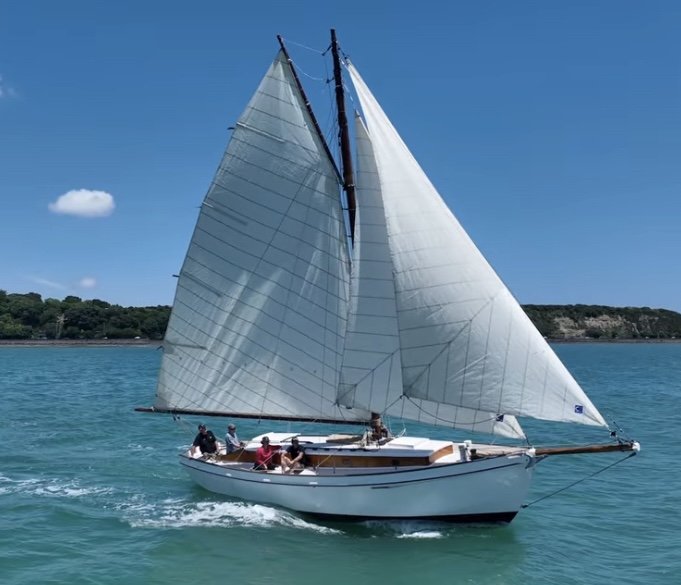Ngataki
Designer: J. W Wray
Built: 1933, J.W Wray, Auckland
Length Overall: 34ft (10.36m)
Beam: 12ft 6” (3.81m)
Draught: 5ft 3” (1.60 m)
Length Water Line: 32ft (9.75m)
Construction Hull: Kauri Carvel
Engine: Nanni N4.38 37.5hp@3000rpm
Sail: High top gaff rig: Main, jib, staysail
Ngataki was donated to the Tino Rawa Trust by Debbie Lewis in 2010
Ngataki on her sea freight cradle heading to Hobart. for the Australian Wooden Boat Festival. (Dec 2024)
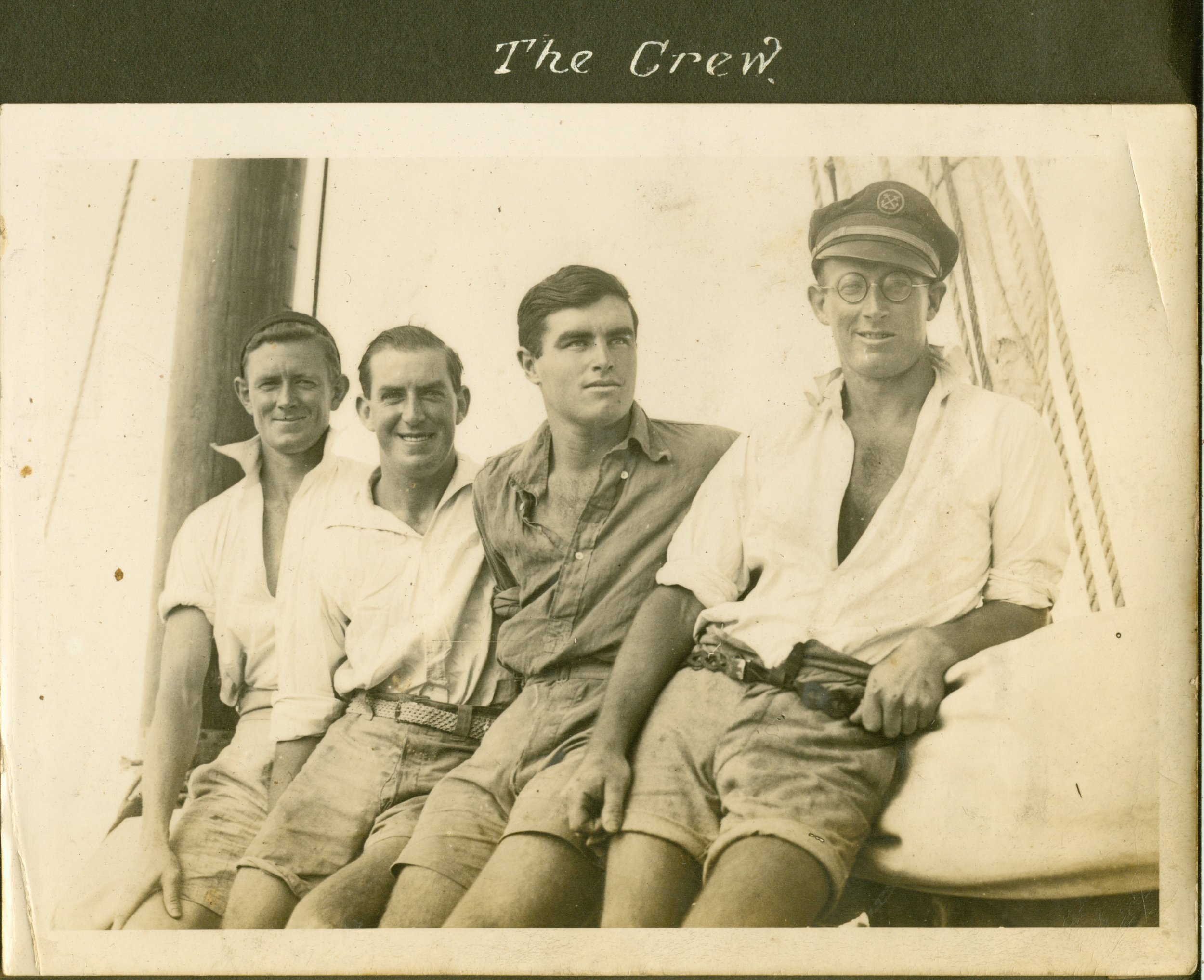

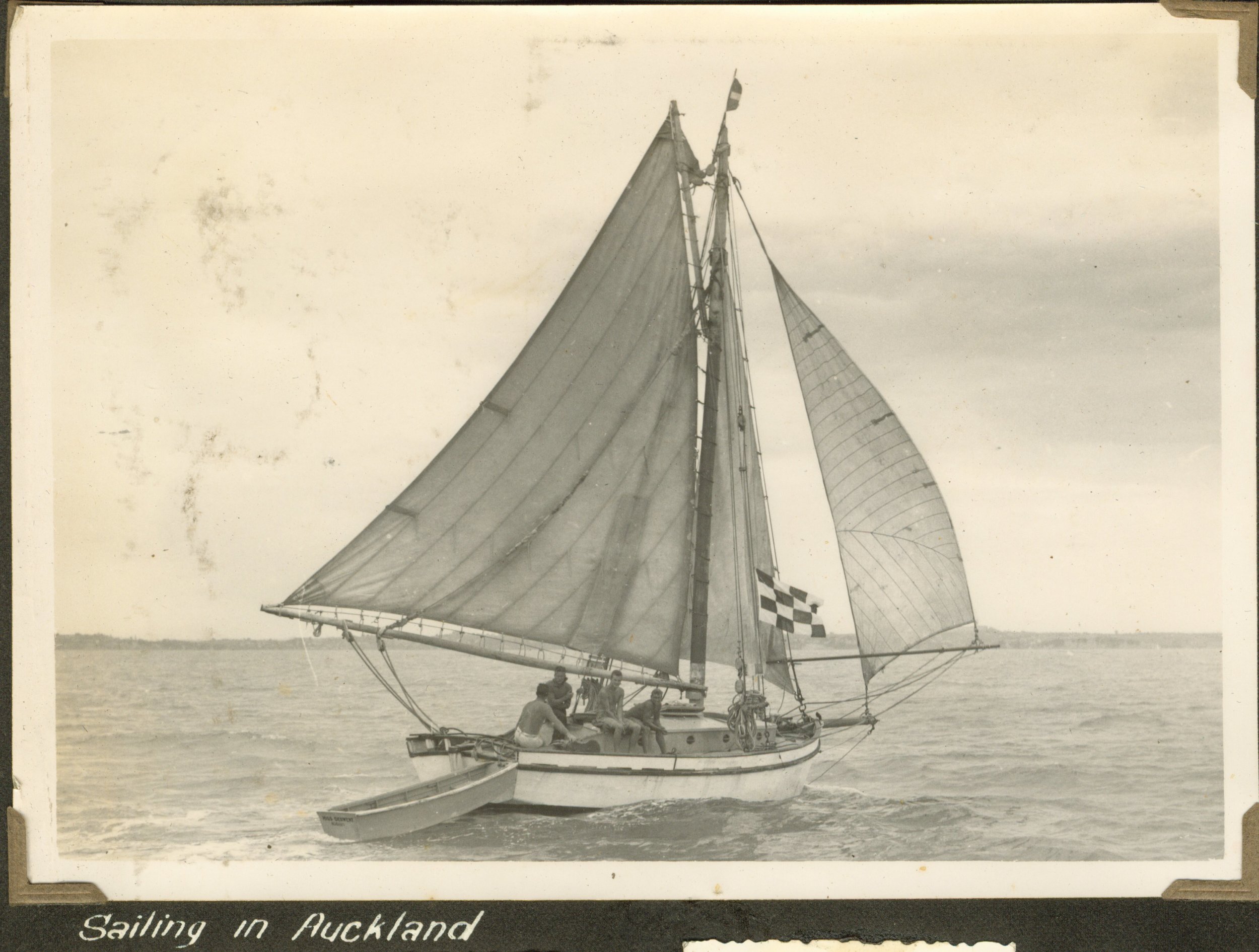

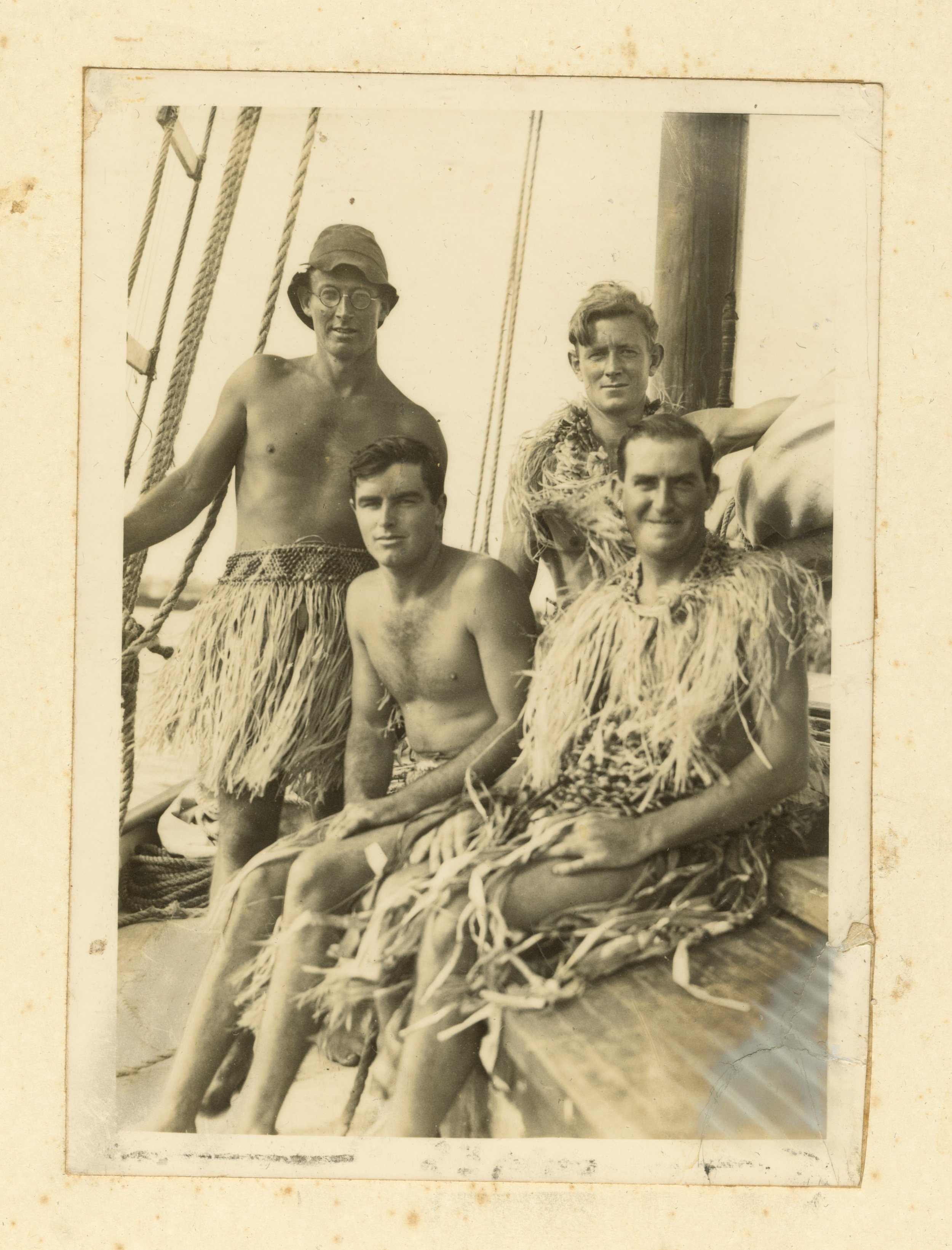
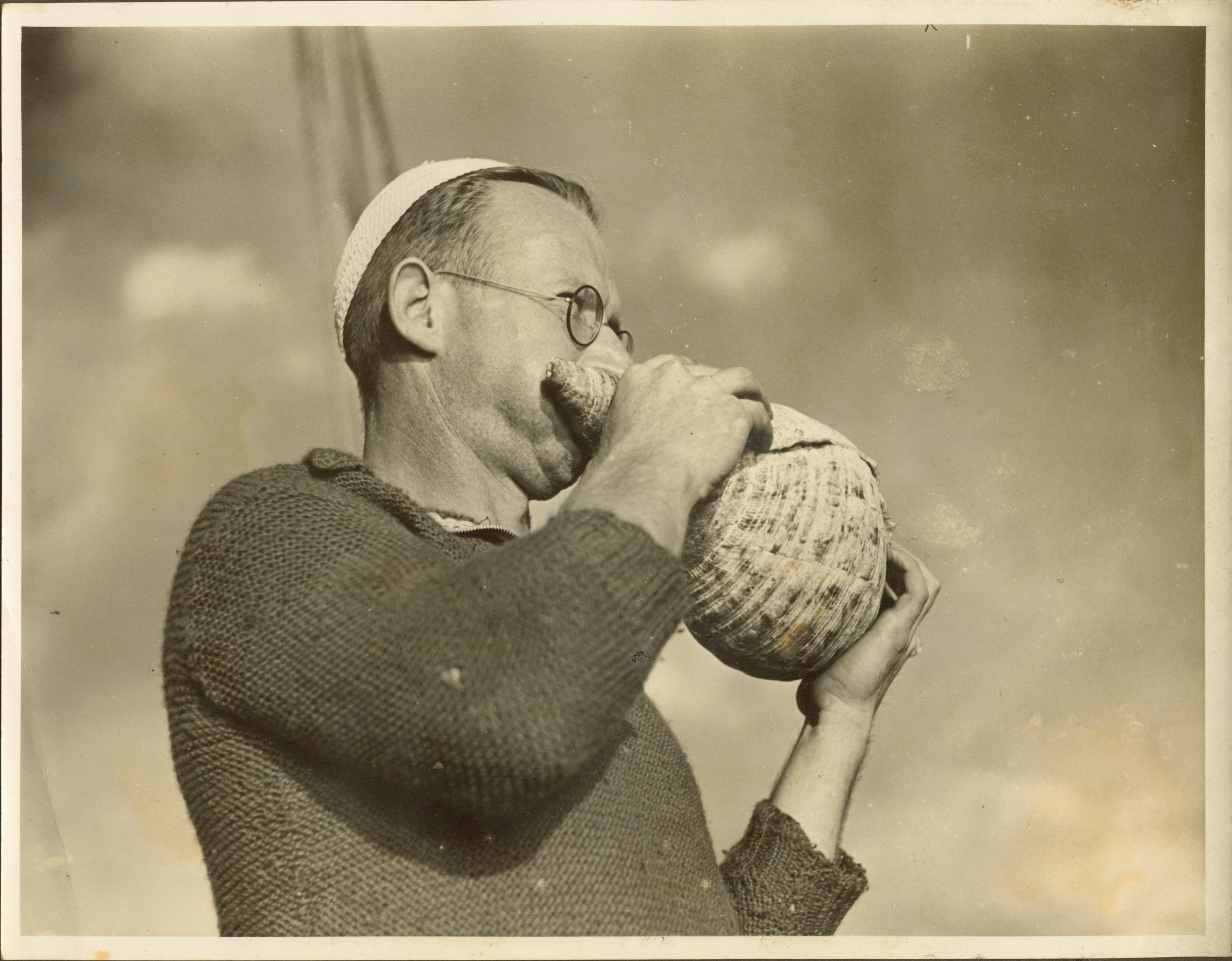

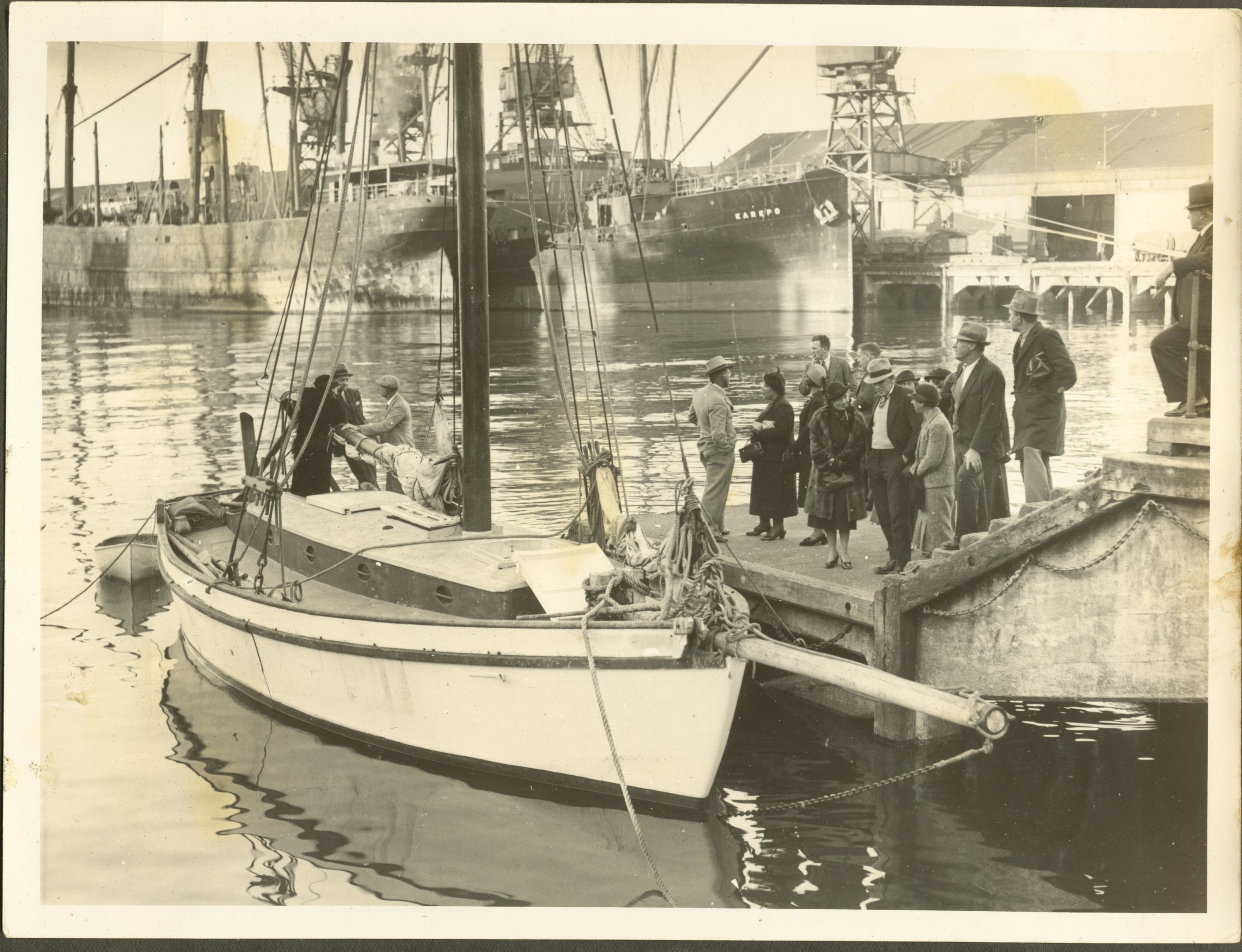
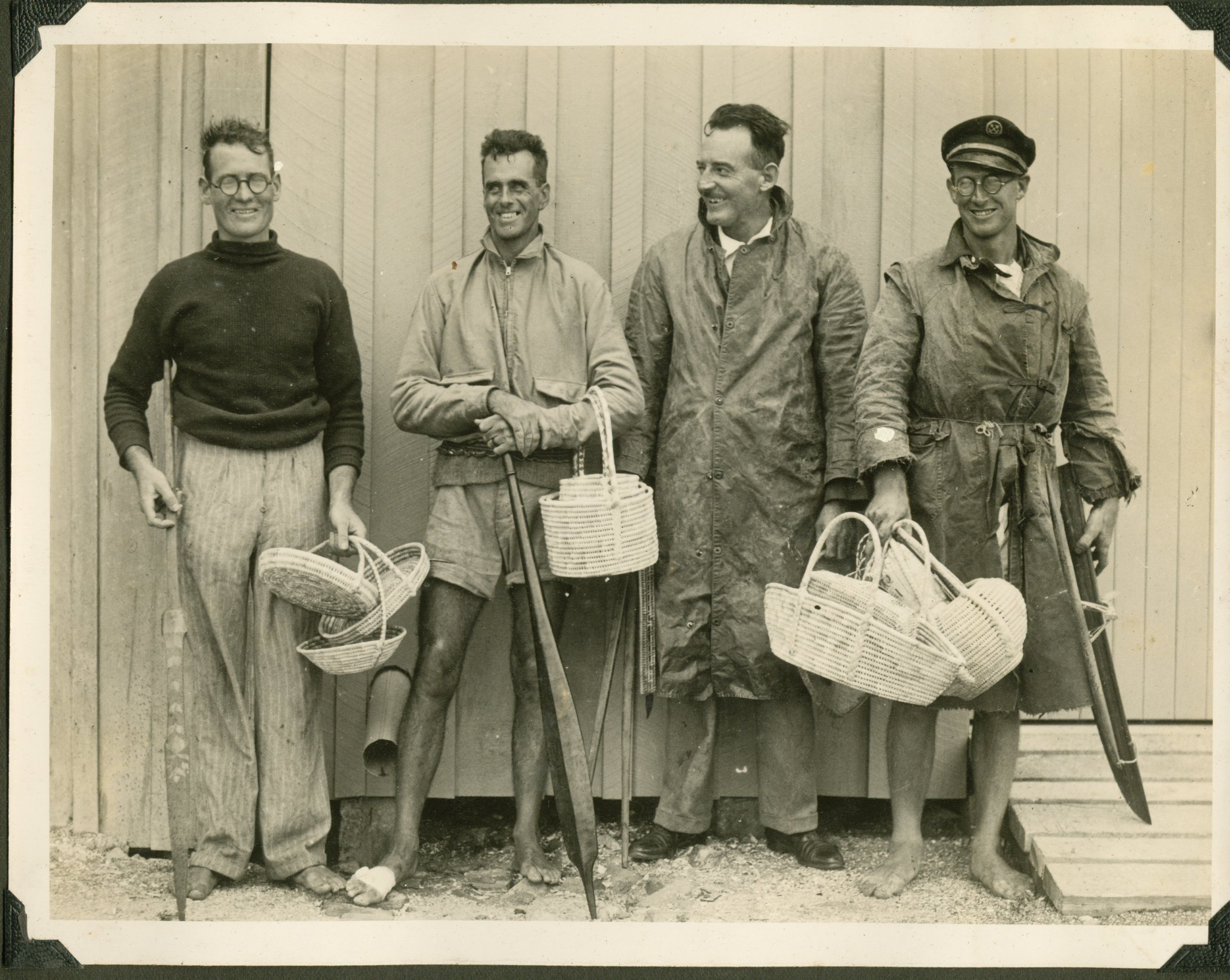
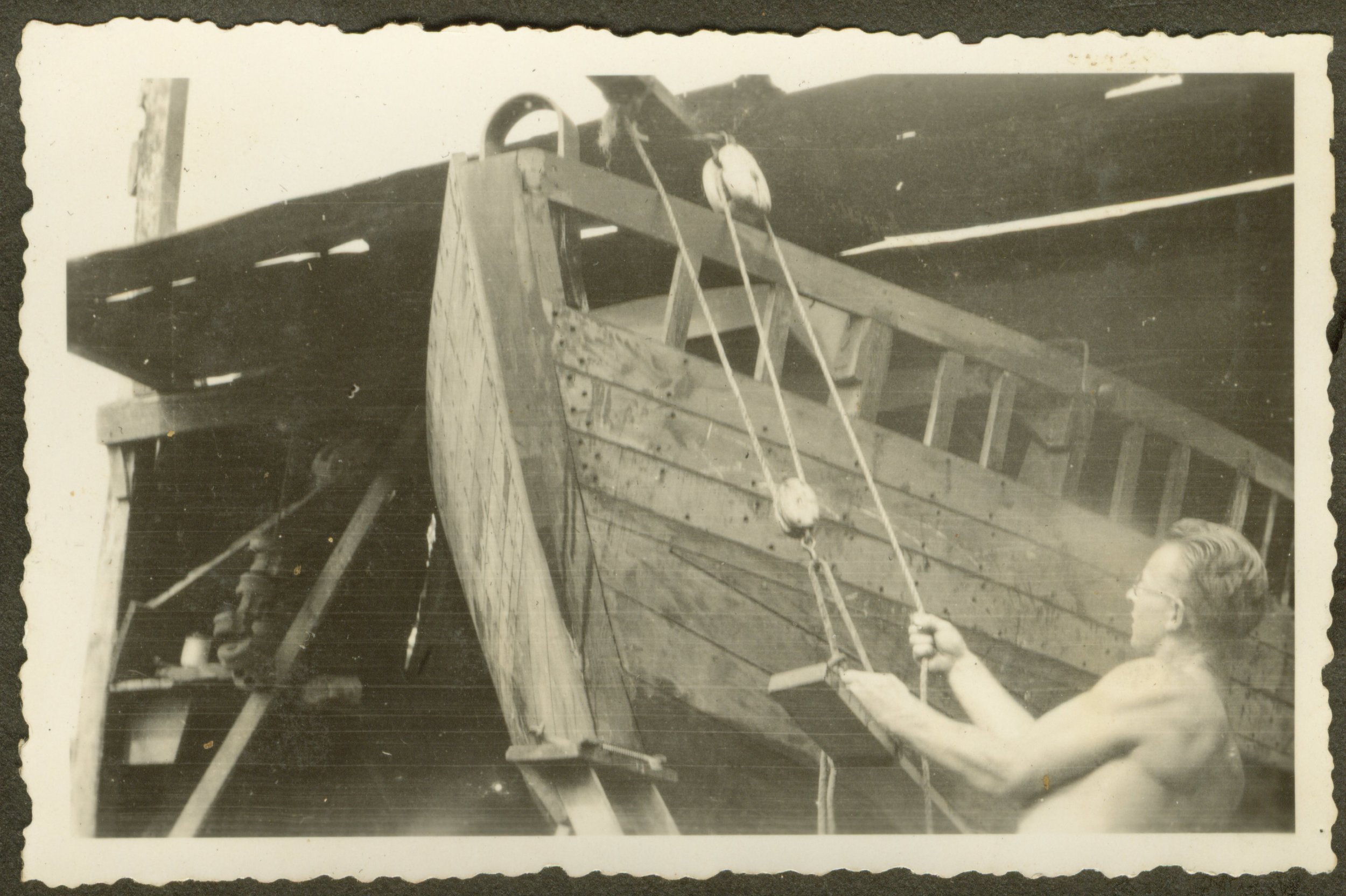

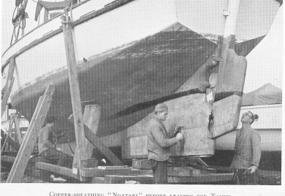
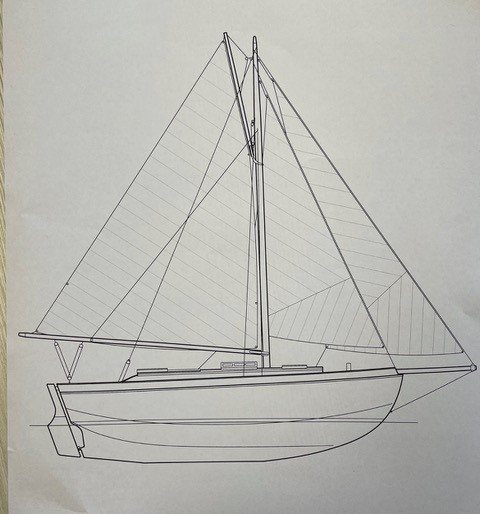
Words by Harold Kidd
It isn’t hard to make a list of the top three local keel yacht/designer combinations that captured Aucklanders’ imaginations in the decade from 1930 to 1940. Right at the end of the decade you would have to include Lou Tercel and his ultra-modern crack racer Ranger and Jack Brooke with his equally modern C Class keeler Gleam, and at the beginning there has to be a place for ugly duckling Ngataki.
Ngataki was designed and built by John “Johnny” William George Branford Wray in the bitterest days of the Great Depression of the 1930s at 94 Lucerne Road, Remuera, the home of his parents Major W.G. Wray MC and May Wray. Johnny was born in 1909. His grandfather had been the headmaster of Timaru Boys’ High School, his father a senior officer of the Railways Department and a veteran of both the Boer War and the 1914-18 War.
Johnny left Auckland Grammar to work as a draughtsman but he dreamed constantly of cruising the Pacific, dreams with an edge of reality in those days because, on the one hand, his job was in jeopardy as the economy of the world fell apart and because he found it boring anyway, on the other, Auckland was a favourite port of call for many of the shoe-string circumnavigators of the time and they berthed right there at the bottom of Queen Street. The most recent adventurer had been Norwegian Erling Tambs with his family on the stout Colin Archer redningskoite pilot boat Teddy in 1931.
When Johnny crewed on Teddy while she was in Auckland, he developed a voracious thirst for offshore cruising and for a boat like Teddy. Not surprisingly, when he was made redundant, he was left with no option, as he saw it, but to construct a yacht and sail away to the islands of the Pacific.
Some years later Johnny wrote a hilarious book, South Sea Vagabonds, describing the design, construction and adventures of Ngataki. It is a seminal tale of Kiwi ingenuity and comradeship which inspired a whole post-war generation of Kiwi yachtsmen who built their own boats in their backyards and followed his path into the Pacific and beyond, usually relying on the sturdy designs of Bert Woollacott.
Johnny’s design was inspired by the form of the double-ender Teddy but, because he thought himself incapable of building her intricate curves, he whittled out the half-model of a 34ft loa 12ft 6in beam square-bilge version with a transom stern. His parameters were that the yacht had to be high-volume and strong but cost him next to nothing because he had only £8.10.0 ($17) and an old 350cc Royal Enfield motorcycle to his name. Even though he was from a relatively privileged background- his parents provided food and shelter and a place to build the boat- he soon became legendary around town as a Kiwi battler who scrounged most of his materials and improvised as few could. Indeed he became a folk hero.
Fastenings were staples made of old fencing wire, boiled in tar taken from the roads and then baked in his mother’s gas stove, when she was out. Caulking was supplemented with old cotton clothes torn into strips. For spars, kauri rickers were cut from the Great Barrier bush by friends and towed back to Auckland, although the mast bent alarmingly and was soon replaced by one of Rewa’s Baltic pine top gallant yards. The keel was the stem of an ancient steamer dug out of an Auckland beach.
The engine was a 1904 Auckland-built Zealandia, extracted from a turnip field and “restored”. Sailcloth and rigging were supplied by Charlie Hansen of Moturekareka Island who had recently had the steel four-masted barque Rewa scuttled to make a breakwater off his bay. Rewa was complete down to her crockery and provided a wonderful source of gear for Ngataki.
After a series of extraordinary mishaps - and triumphs – Ngataki was launched at Mission Bay in late 1933. Typically, Johnny had forgotten to plug the prop shaft hole, but saved the day with the bung of a celebratory beer keg. Anything Johnny Wray and his crew did was good copy, as it plainly showed the zest for life and the battling spirit of our young men in difficult times.
Many young men crewed on Ngataki in those offshore cruises prior to the outbreak of war in 1939. Prominent was Dick Wellington, who later made offshore voyages in the yachts Ariel, Roxane and Seaward. Dick lost his life over Holland flying as a navigator with the RNZAF.
The first cruise was in September 1934, to Sunday Island in the Kermadecs, Tonga and Norfolk Island. Johnny taught himself to navigate on the hoof.
Ngataki arrived back in Auckland in time to start in the Trans-Tasman race to Melbourne in December 1934. Johnny’s brother Geoff and Ron Hunt of Narrow Neck were in the crew.
The only other entrant was German Georg Dibbern in his 32ft ketch Te Rapunga with Aucklanders Fred Norris, and John Tattersfield in the crew. Dibbern won the race but both owners promptly decided to race on to Hobart. Although Ngataki took a severe drubbing in Storm Bay and lost again to Te Rapunga, the reception both yachts got in Tasmania was magnificent.
Sailing home, Johnny and Dick Wellington decided on another trip to Sunday Island to take three settlers there and to pick up a cargo of oranges for sale in Auckland. Predictably, they ate all the oranges on the return trip. Next followed a voyage to Tahiti, taking in Niue and Vavau on the return trip. Johnny renewed acquaintance with Loti, the Tongan girl he later married.
Next there was a trip to Norfolk Island. Off North Cape Ngataki was overwhelmed in a hurricane and capsized but miraculously was knocked upright by a giant comber. They fought their way back to port, heavily damaged and Ngataki spent several months high up the Wairoa River being repaired.
Johnny then undertook several offshore voyages which the Auckland public followed closely. He had a champion in “Wilkie” Wilkinson, the yachting writer on the Auckland Star. In June 1936 Johnny set off alone for Tonga – and Loti. Aboard was a kitten Rasmic as mate. Charlie Hansen killed a cow and they bottled her for provisions. It was on this trip to Tonga that he wrote his book and Ngataki’s cruises continued right up to the war.
There was a successful trip to Norfolk in 1937 and another to Sunday Island in 1938. A 9hp Kelvin had now been installed in place of the Zealandia “Methuselah”. In all, Johnny did 58,000 offshore sea miles in Ngataki.
Johnny also hit the headlines with two delivery voyages. In 1935 he and Dick Wellington sailed the ill-found schooner Te Hongi from Hokianga, losing her on the beach at Ahipara, salvaging her and getting her intact to Auckland. Johnny also helped with the stormy voyage of the Chas. Bailey-built launch Makora to Wellington in February 1938.
When war came, Johnny enlisted in the RNZAF and was given the rank of Flight Sergeant. He spent the war years at Mechanics Bay and Hobsonville with the flying boat traffic that had a huge importance in the Pacific theatre. He and Loti made their home on Waiheke where he had bought property in 1936. In 1946 Johnny sold Ngataki to Julius May of Waipawa. Later owners included Ray Esdale, C. Torr, Joseph Griffin and finally Picton sailor Debbie Lewis who sailed her to South Africa and then home via Panama, arriving back in 1995.
In 1948 Johnny built a replacement for Ngataki. Waihape was a 44 footer, a curious vessel with a turtledeck cabin top and twin diesels, in which he did more Pacific cruises. He and Loti were a devoted couple but Johnny never went back to a downtown office, making his living as a fisherman at Waiheke.
Considerable restoration work has taken place taking her back to her 1933 configuration, including reinstatement of her high bulwarks. The boat is now as sound as a bell, despite her fencing-wire fastenings.
Debbie Lewis continues to be involved in Ngataki’s life. She sailed Ngataki almost as long and as far as Johnny Wray, often accompanied only by her son Jay.
Footnote:
Ngataki has since been faithfully restored by the Tino Rawa Trust and launched on the 8th August 2014 after a four year restoration. The televised launch in the Viaduct Harbour coincided with the 75th Anniversary Edition release of Johnny Wray’s ‘South Sea Vagabonds’ by Harper Collins.
Additional fund was raised in 2016 to strip plank, glue and fasten with epoxy and sheath the entire hull with epoxy glass. Whilst we had confidence in the No.8 wire dipped in road tar and baked in Mrs Wrays oven, this has added significant strength to the hull and lengthen Ngataki’s life span.
In late 2024 Ngataki set sail with a new Nanni engine, new electronics, reglassed deck and her original high top gaff rig configuration. New oregan spars, classic sails and new rigging have been completed.
Update January 2025:
Ngataki has now been sea freighted to Hobart to attend the Australian Wooden Boat Festival. 7-10 February. As part of the 4 day festival she will be on the start line with her 1935 Trans Tasman Race competitor Te Rapunga which has been restored and residing in Hobart. The Tino Rawa Trust, in partnership with the New Zealand Maritime Museum, is also presenting the NZ Pavillion ‘Pacific Seafarers’ exhibit. On display will be the Trust’s 1902 Logan oil launch Otira, the 1938 Frostbite Corsair, the 1937 Silver Fern Rosabelle and Annie a 1930 gunter rigged PClass.
All enquiries about Ngataki and the NZ Pavilion at the Australian Wooden Boat Festival are most welcomed.

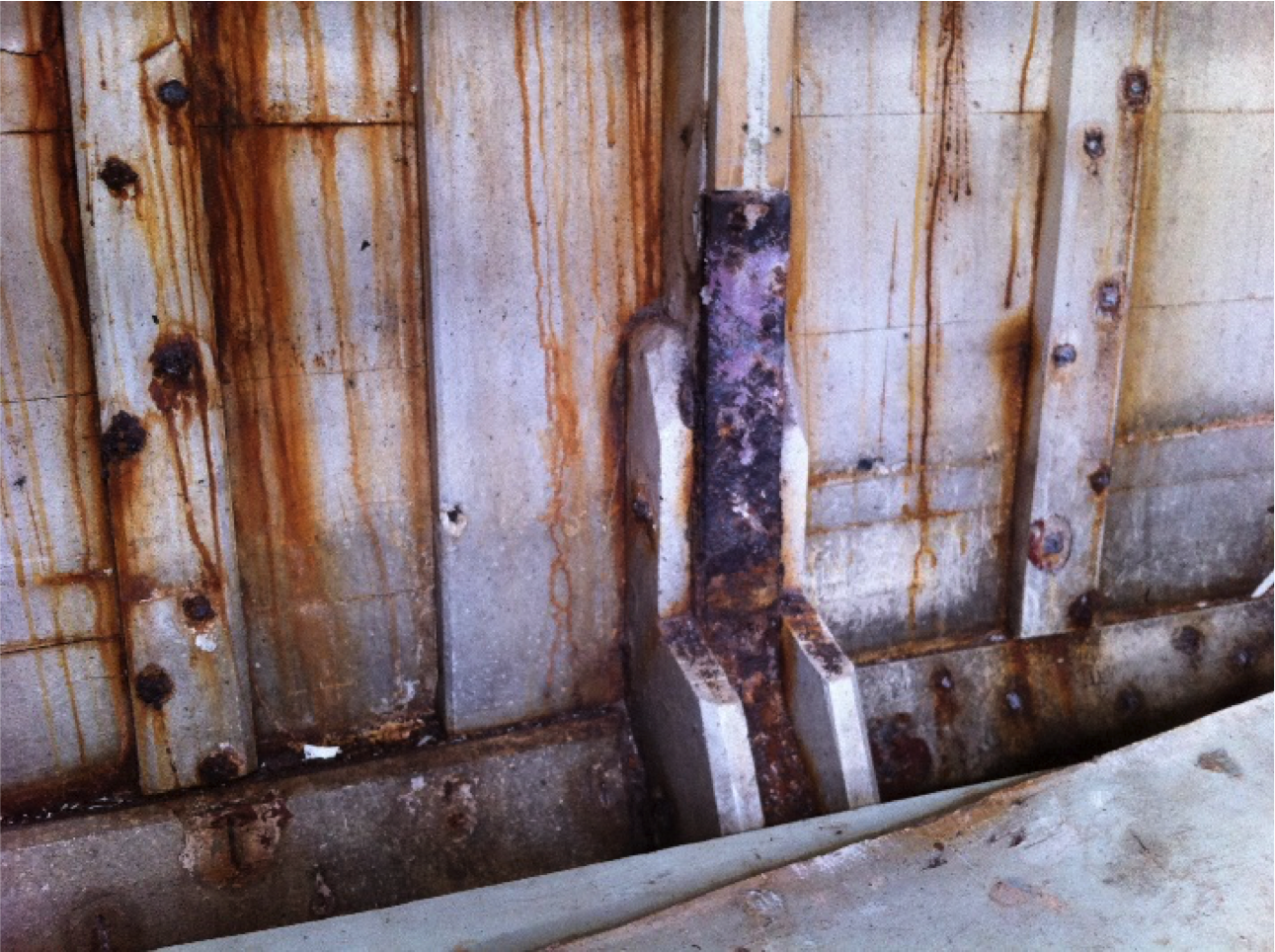
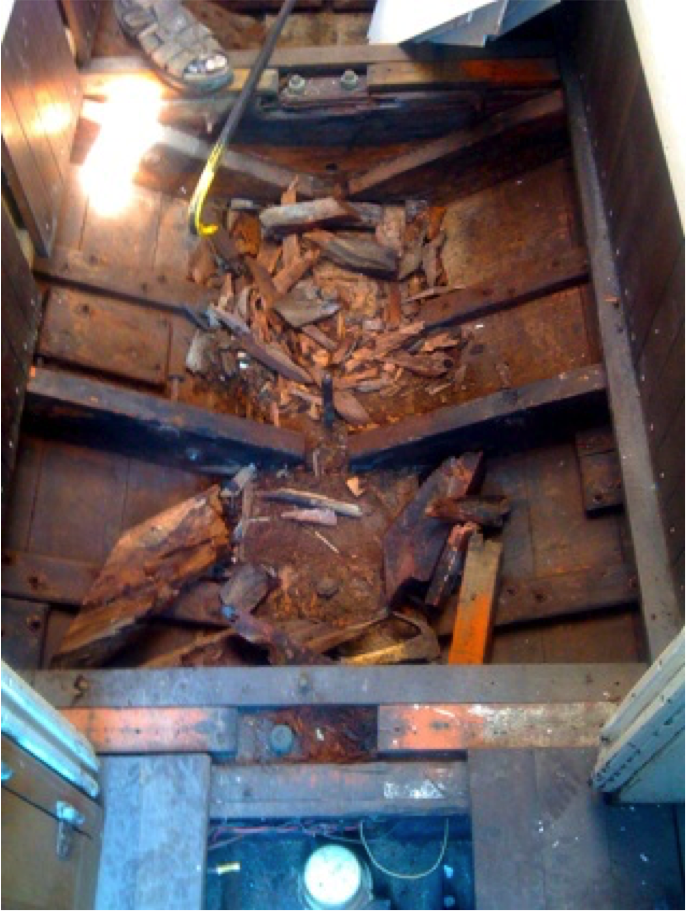

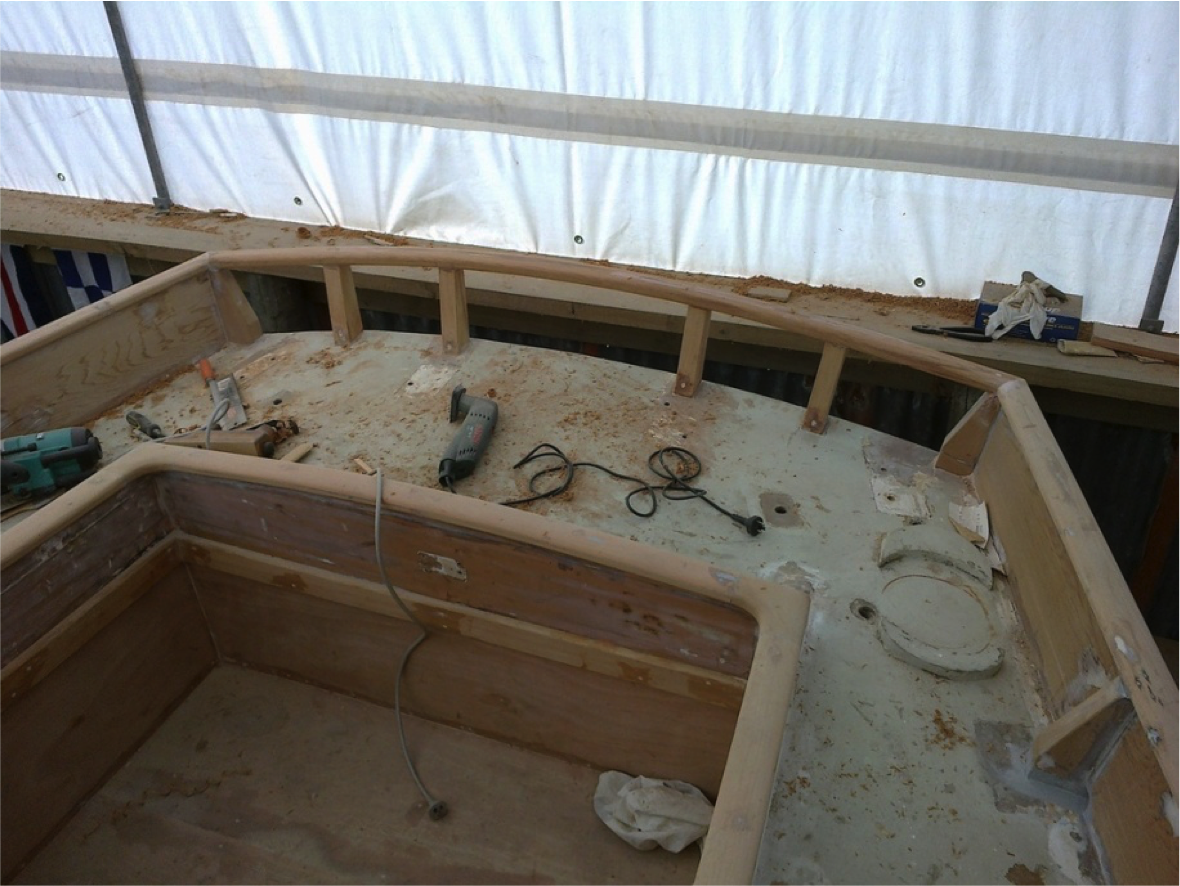

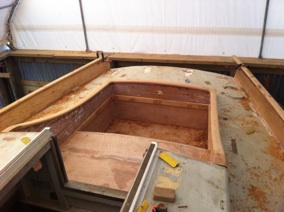



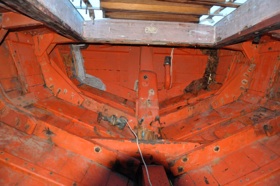



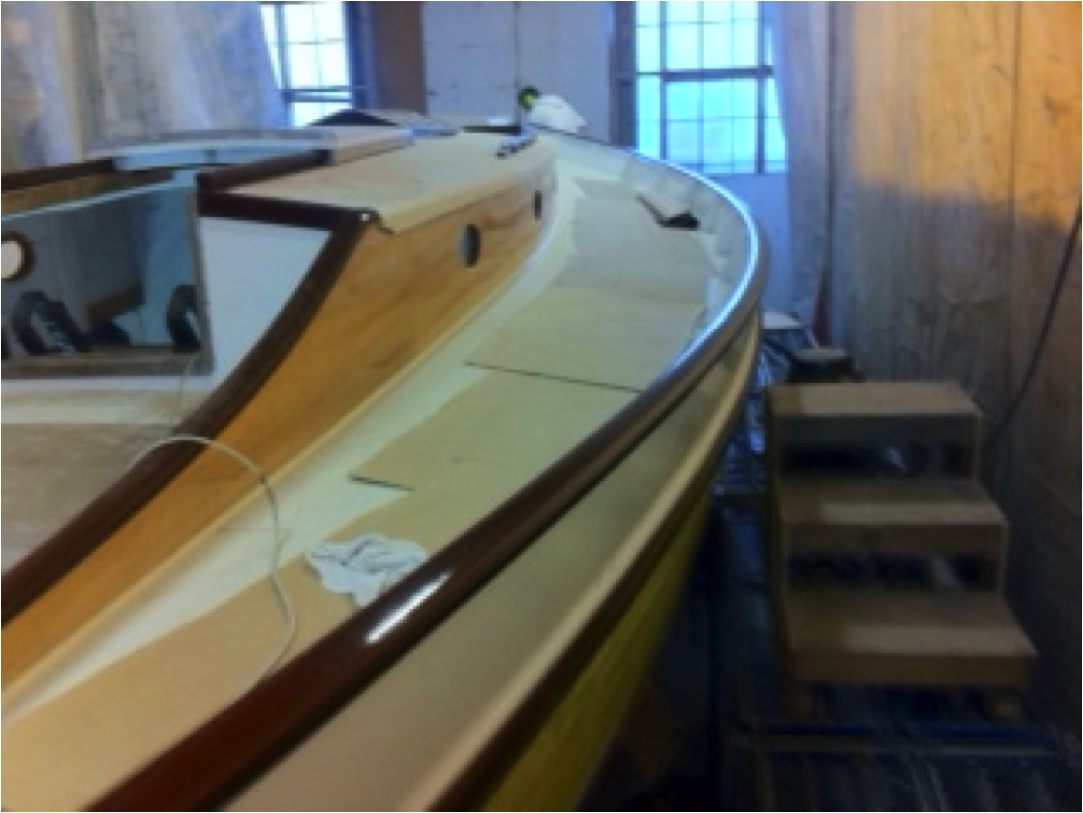

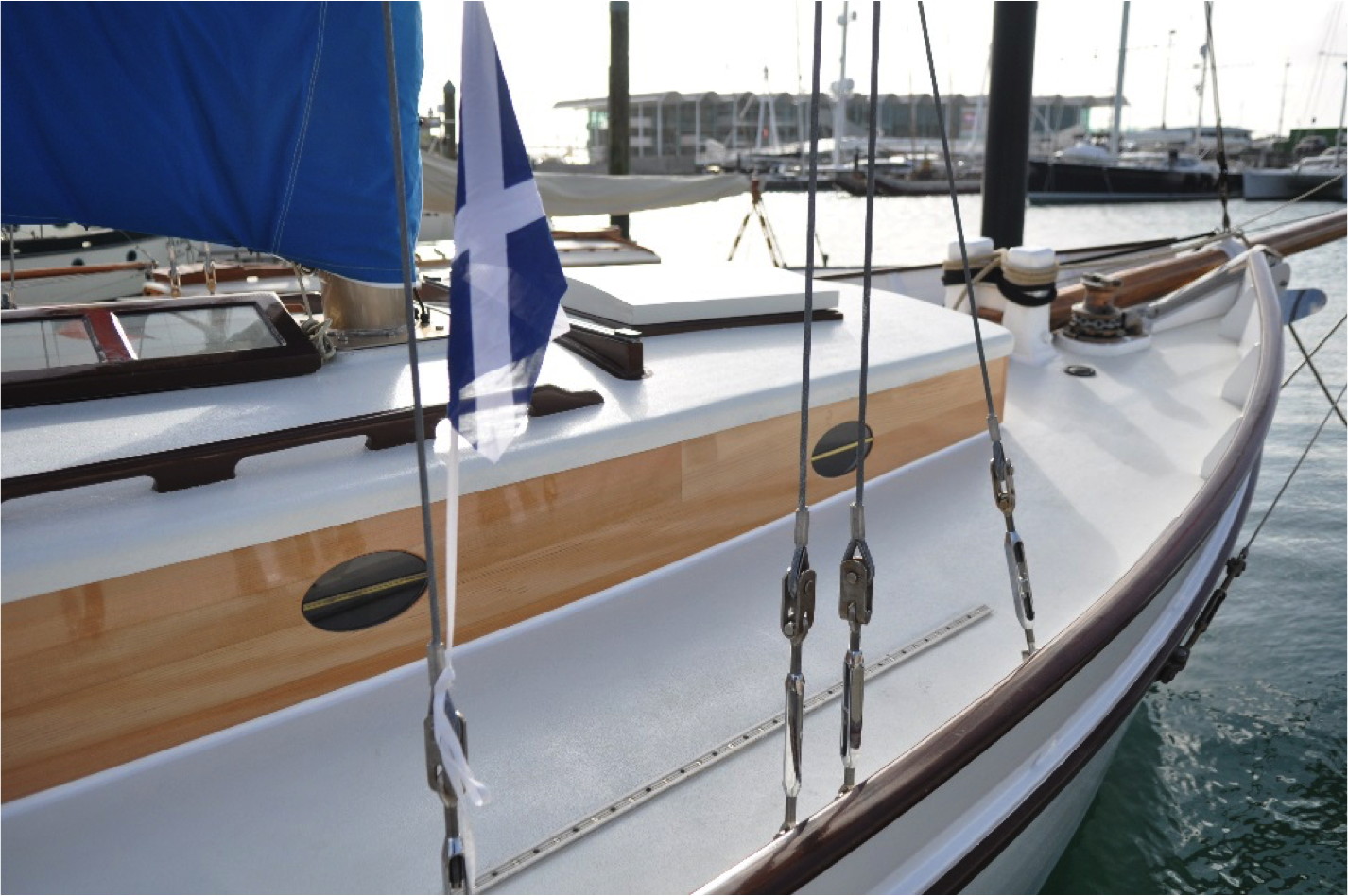
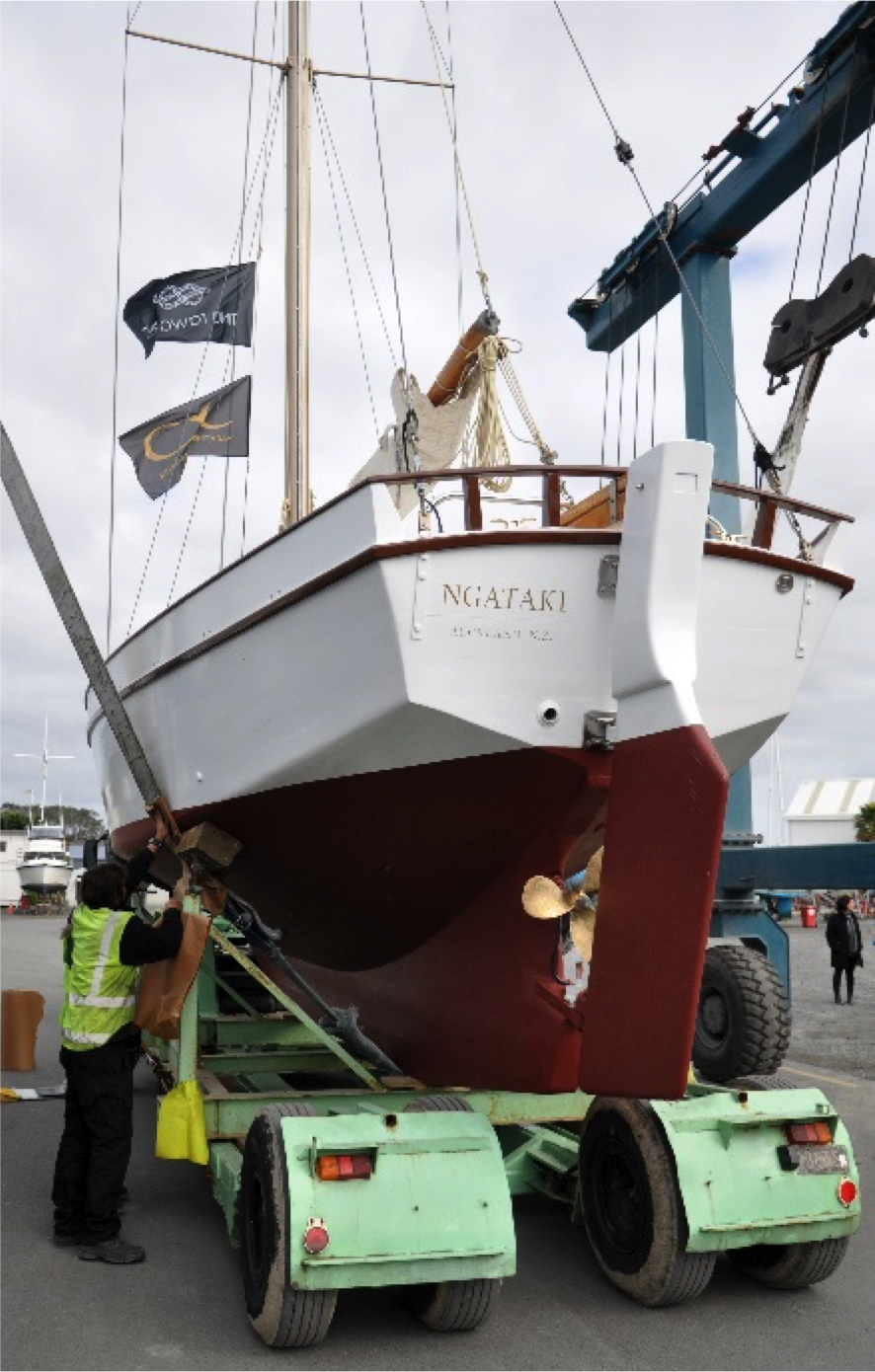
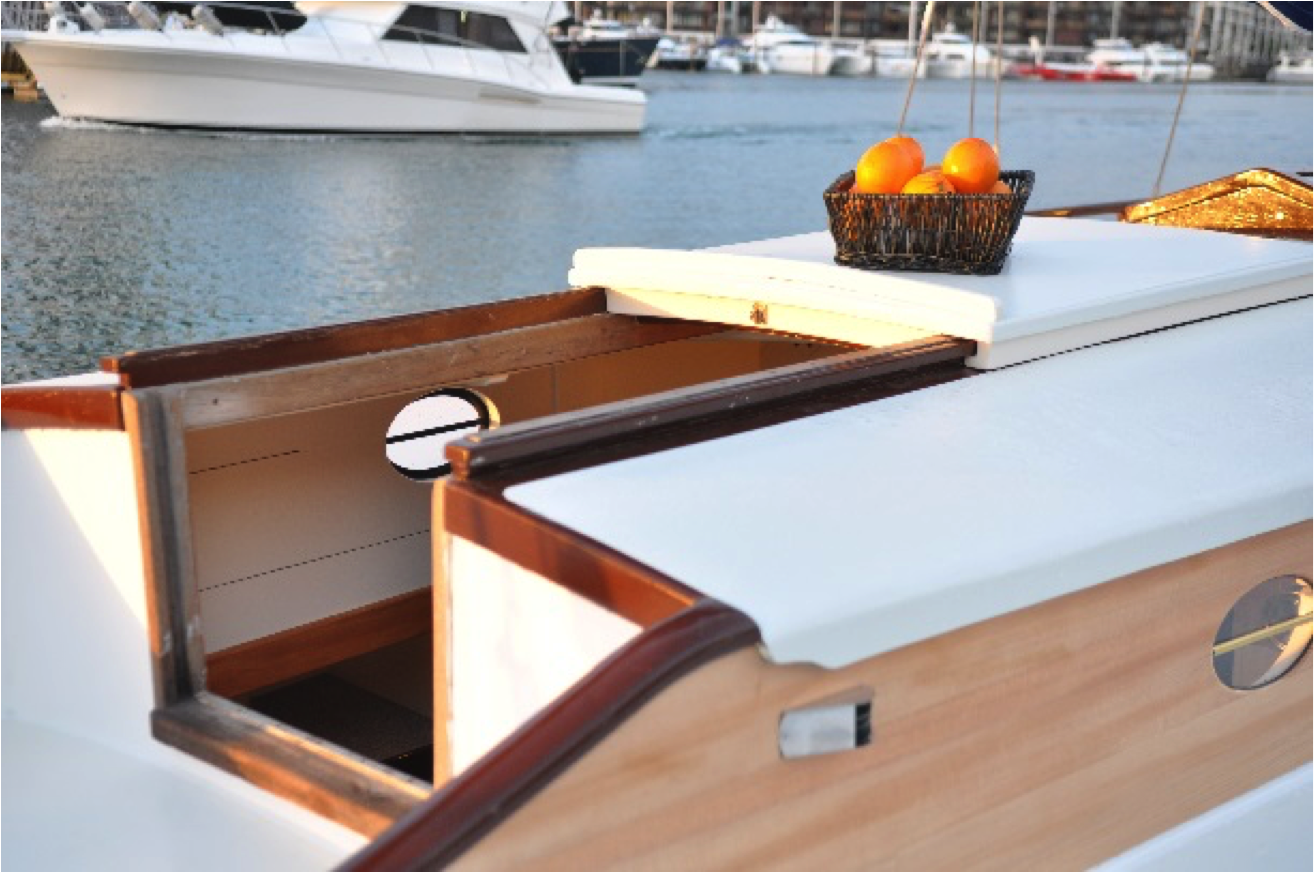

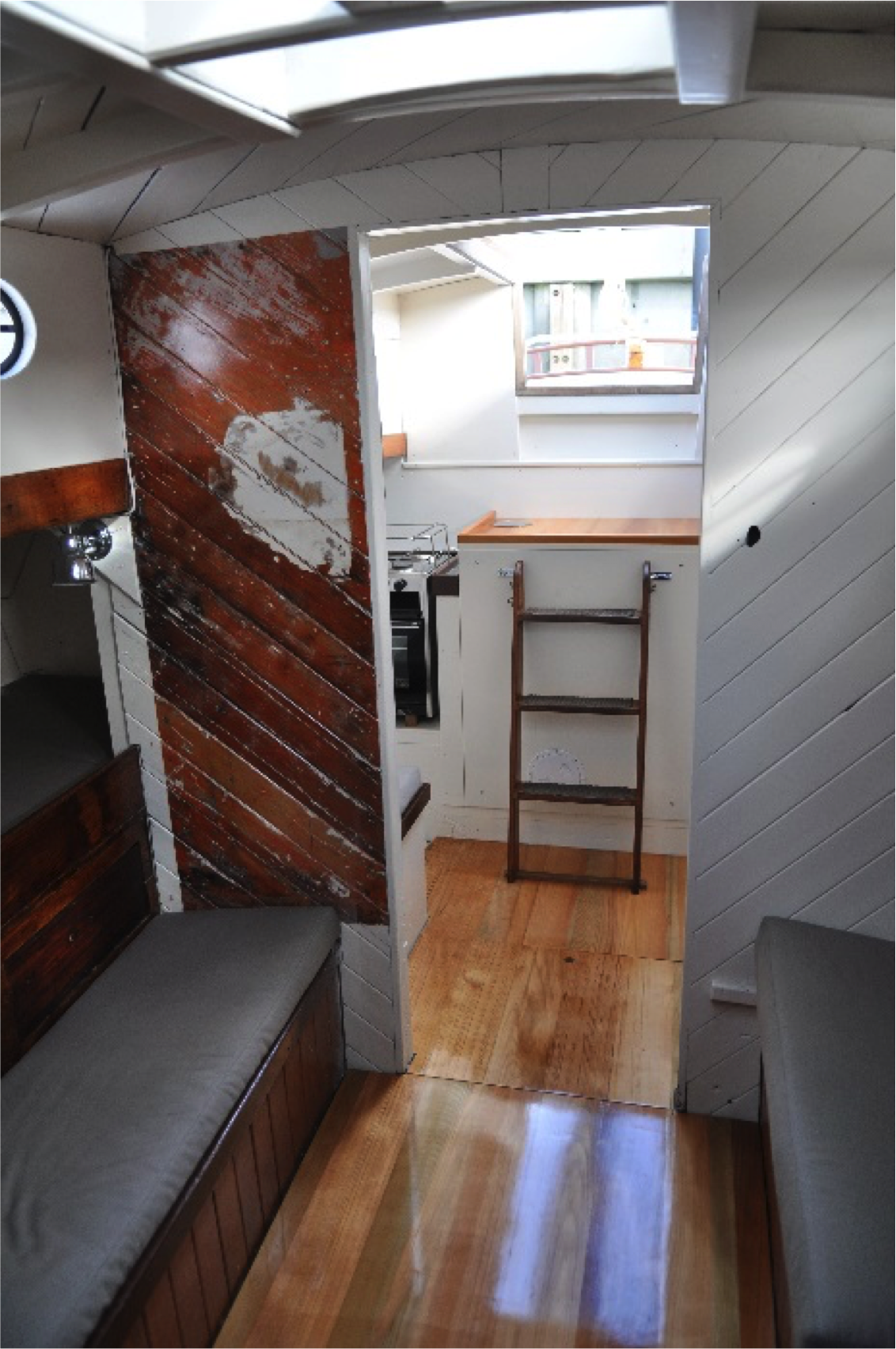
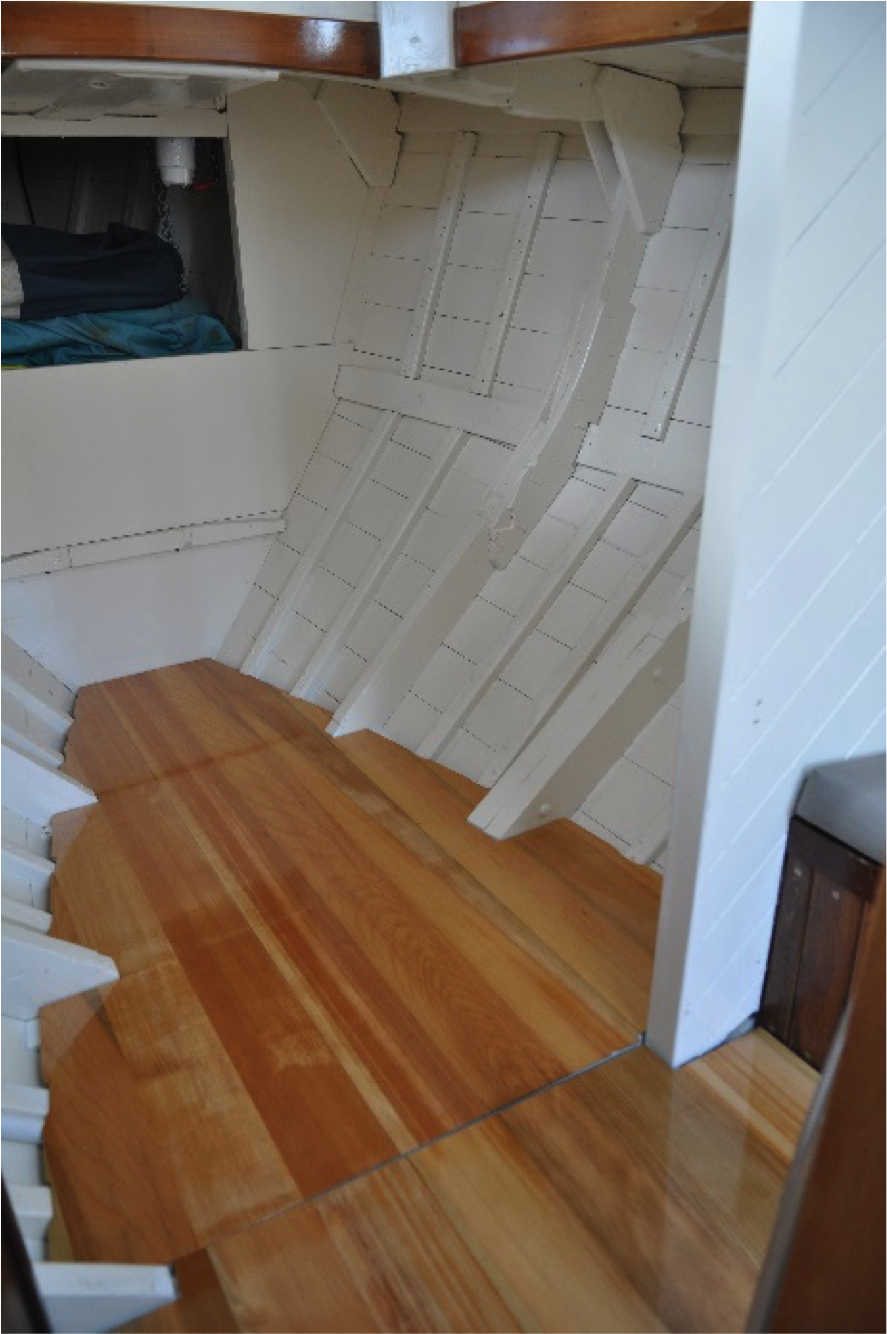
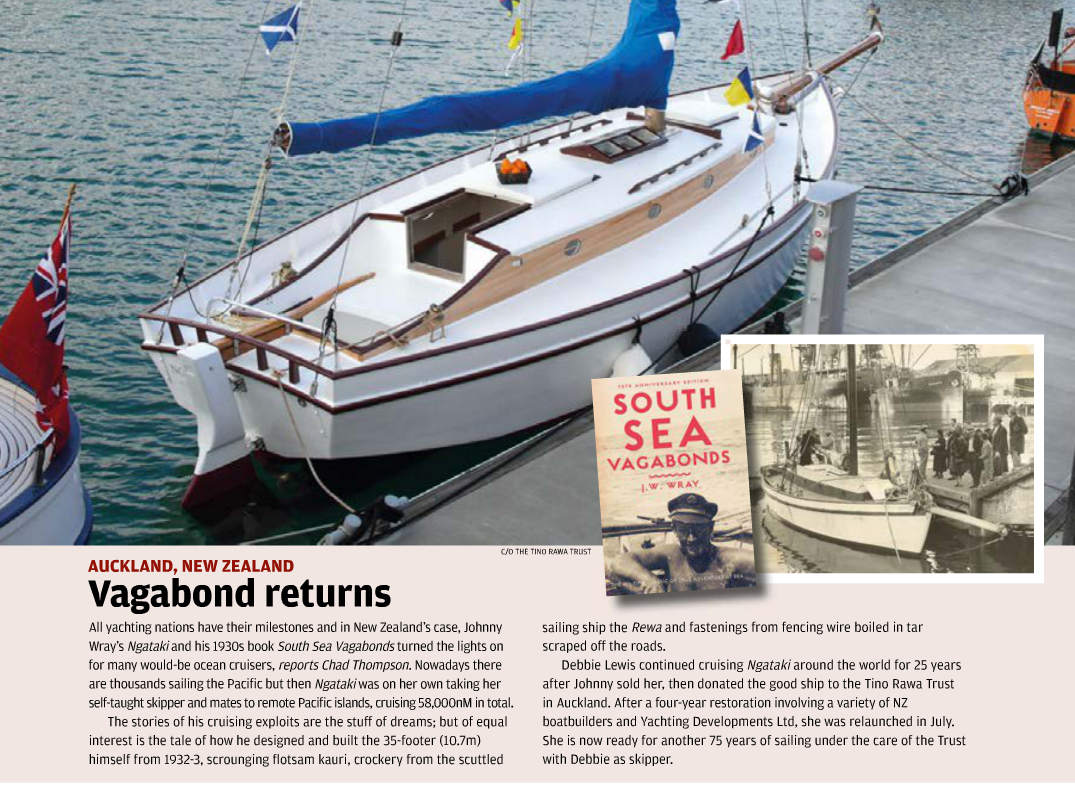
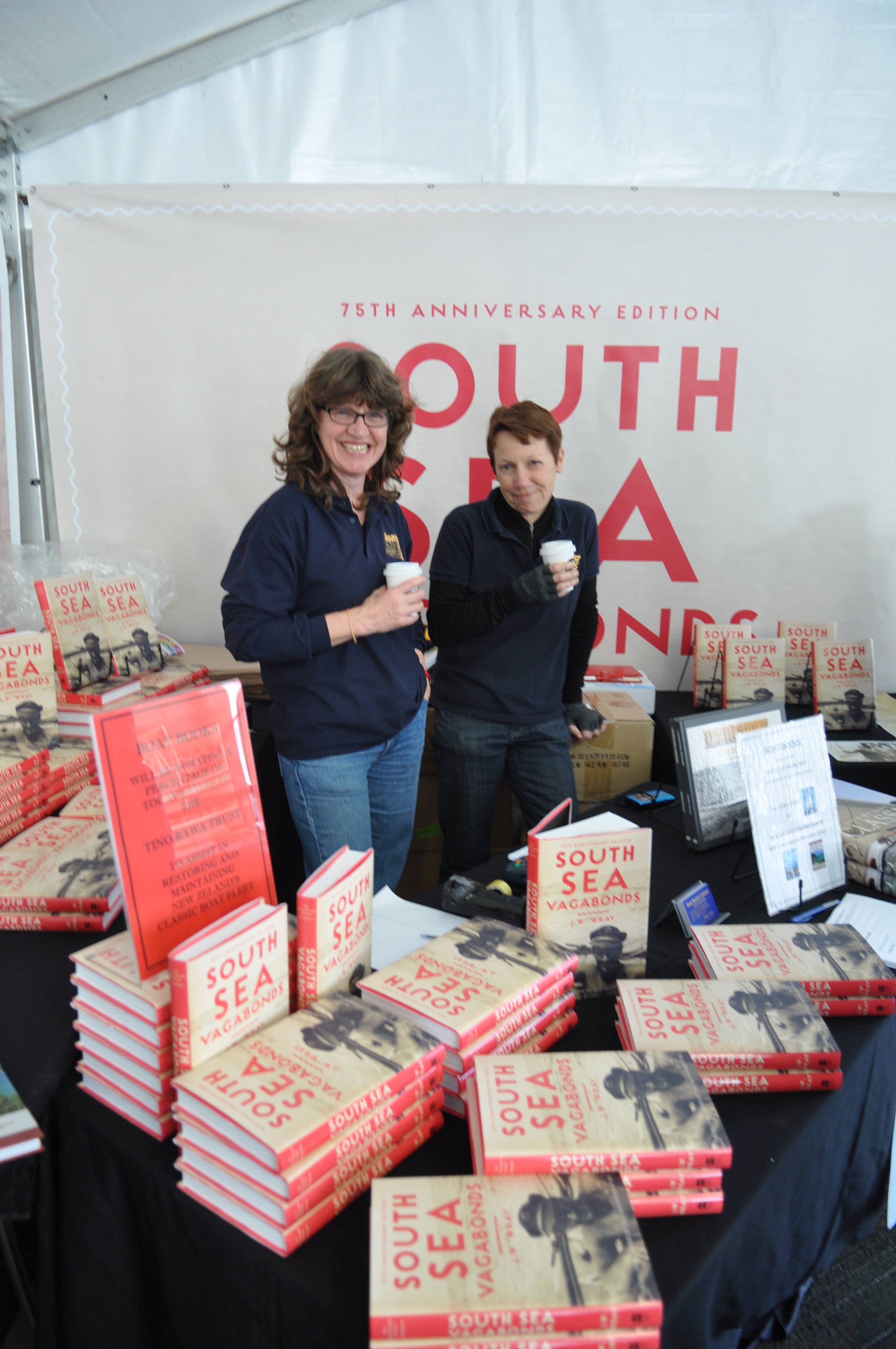

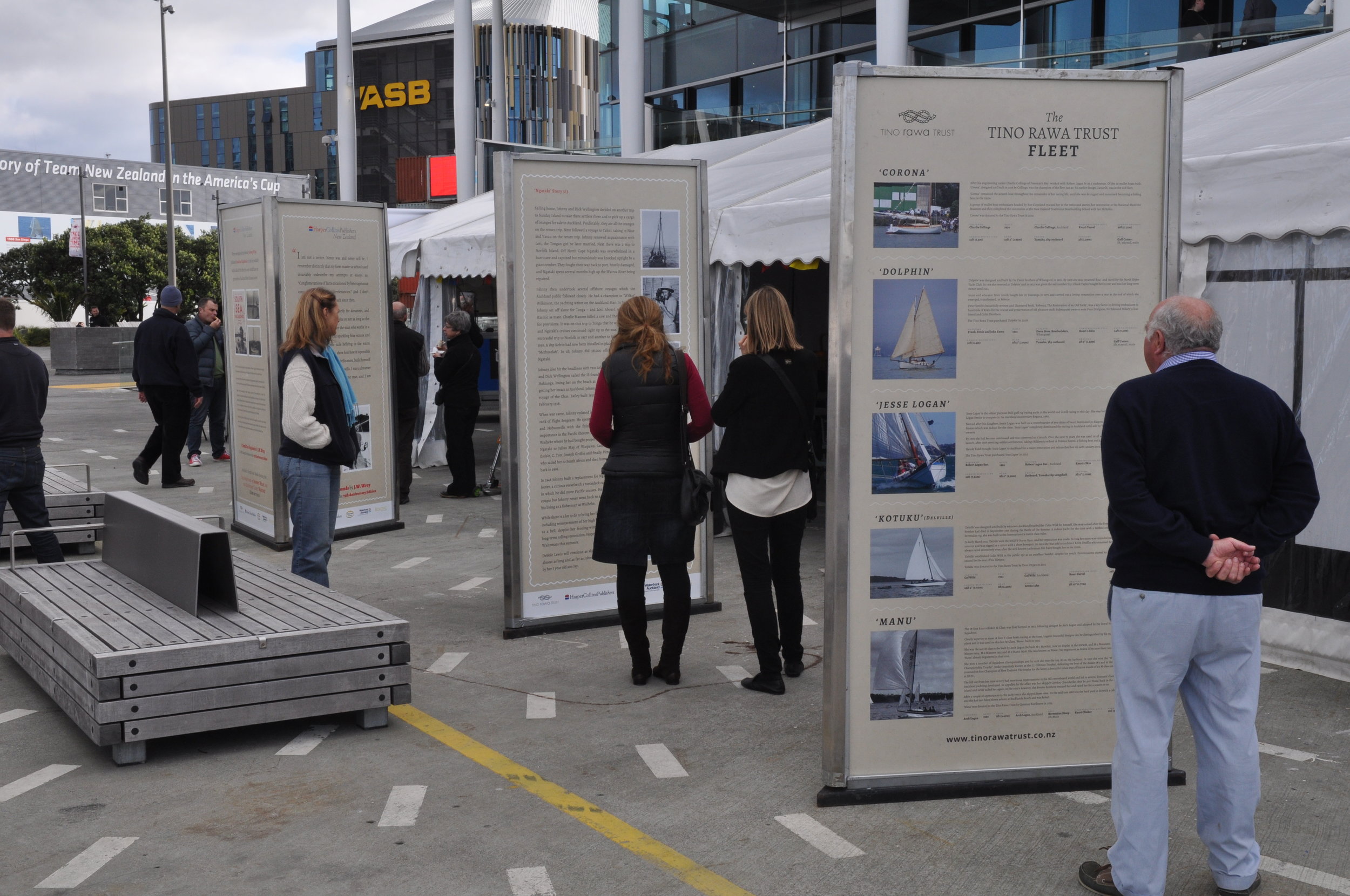

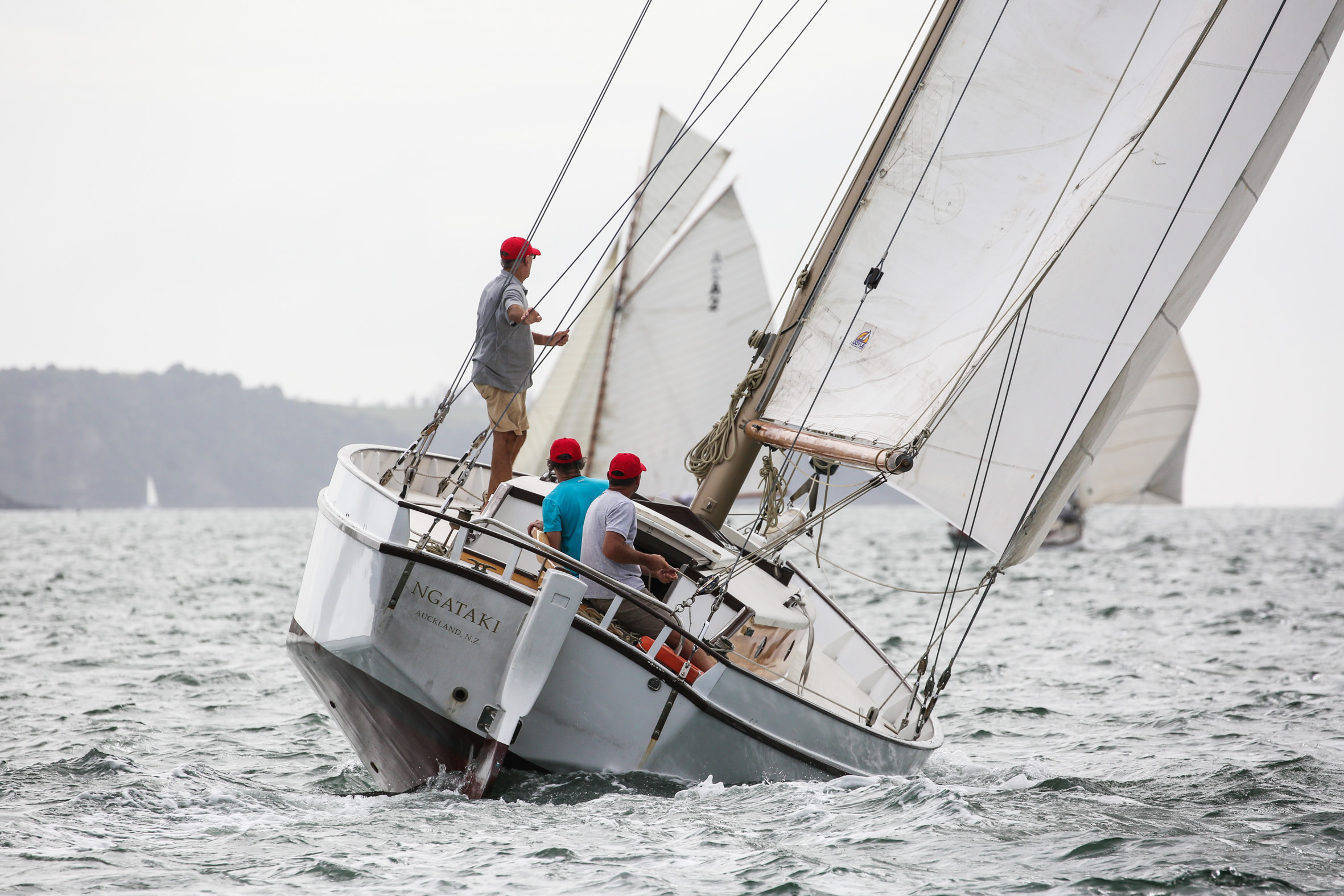
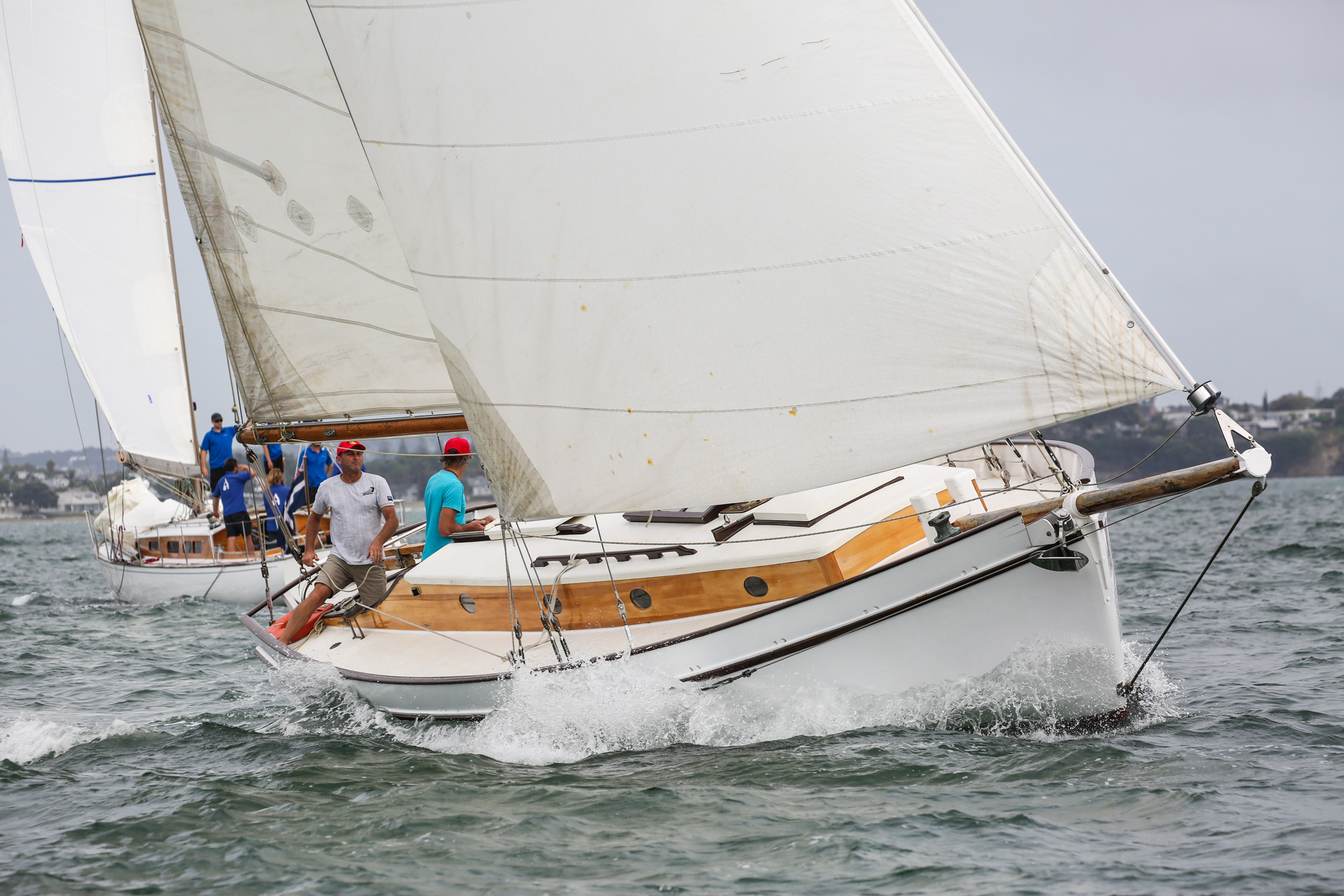
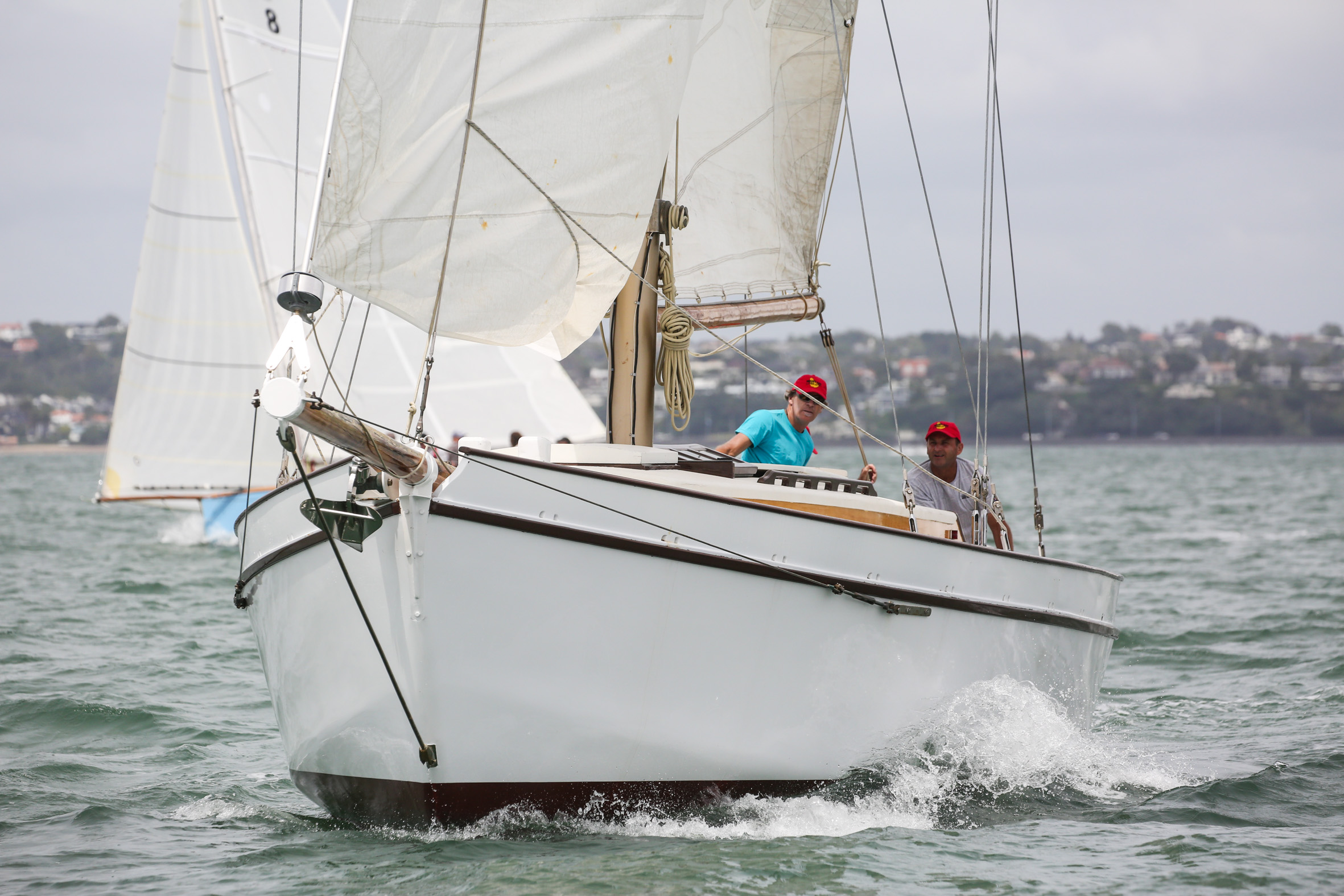

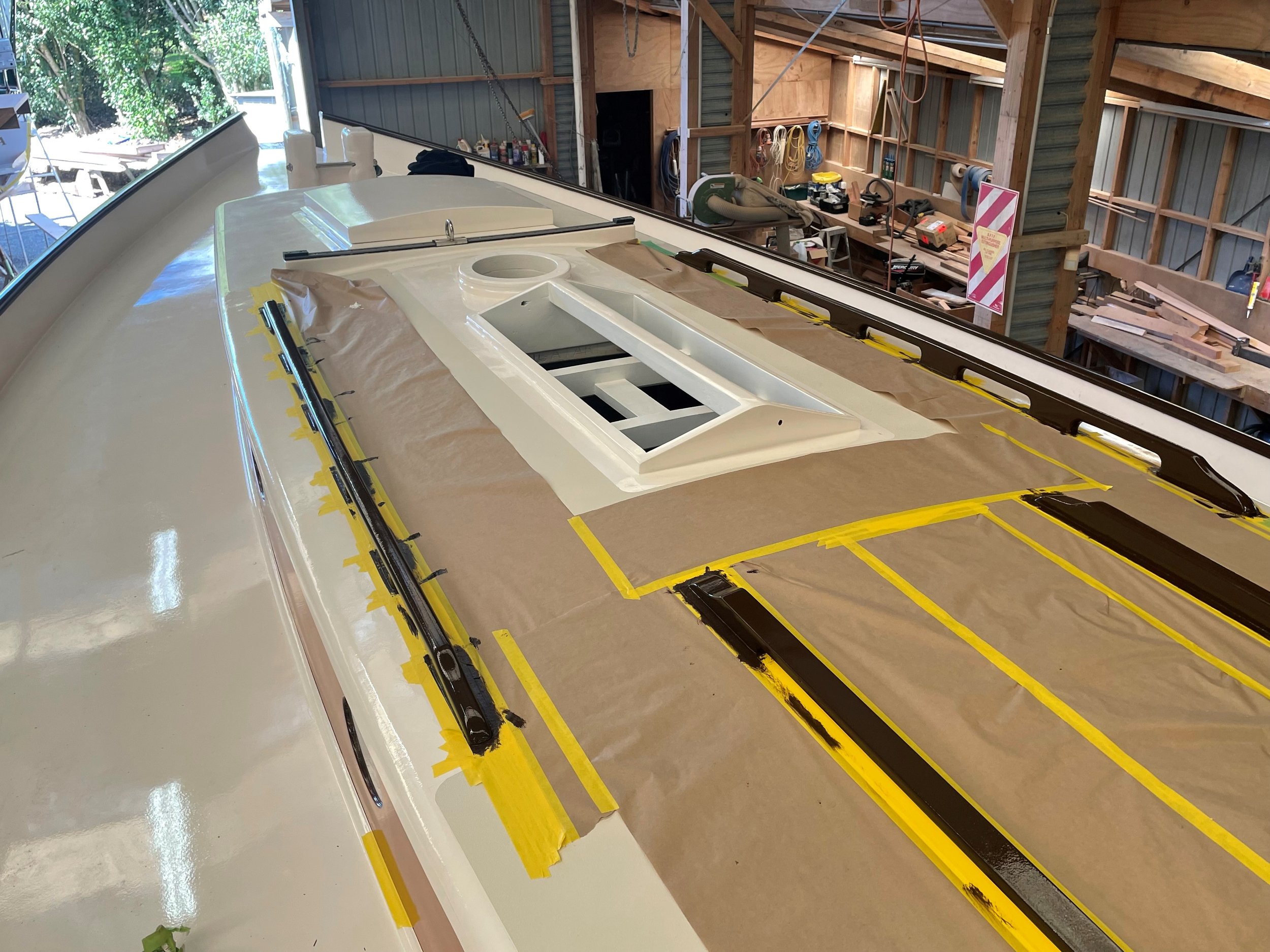

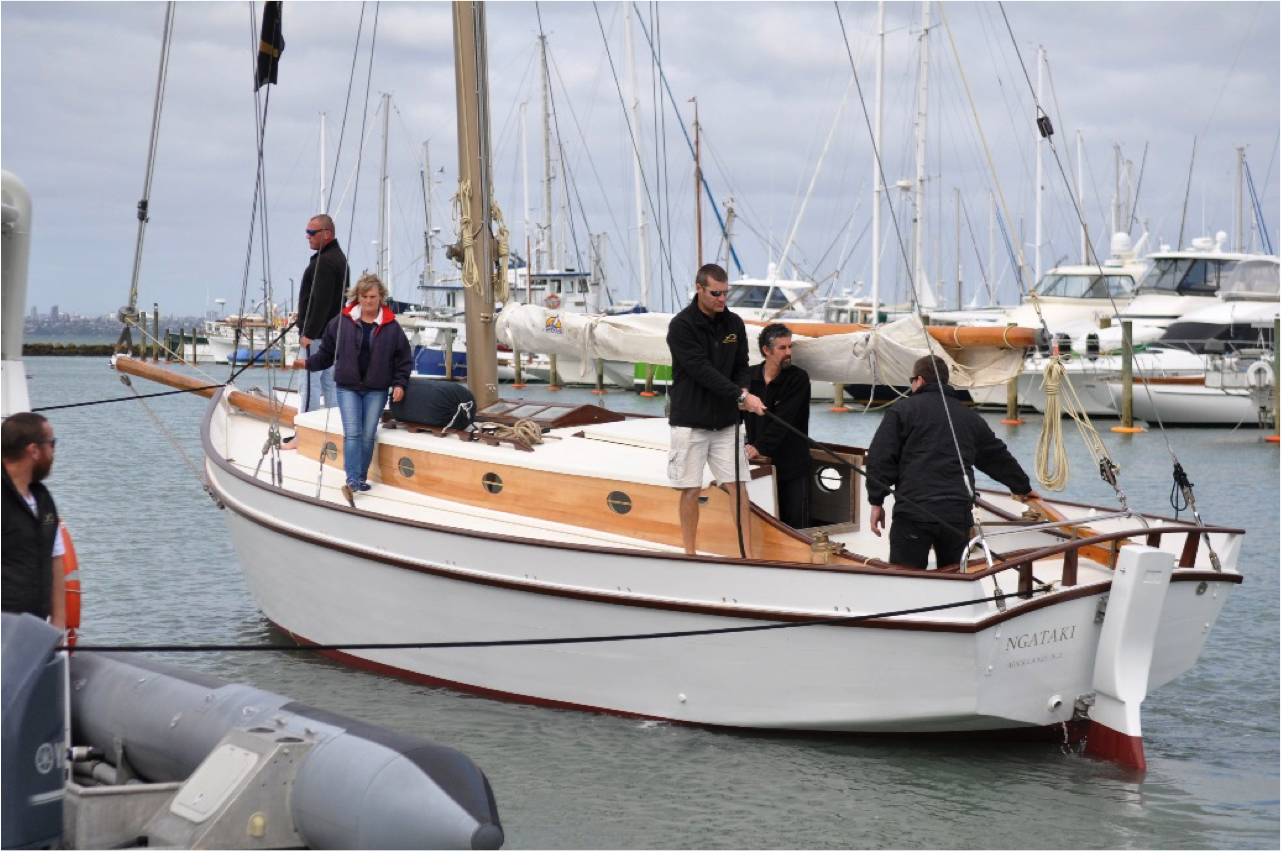
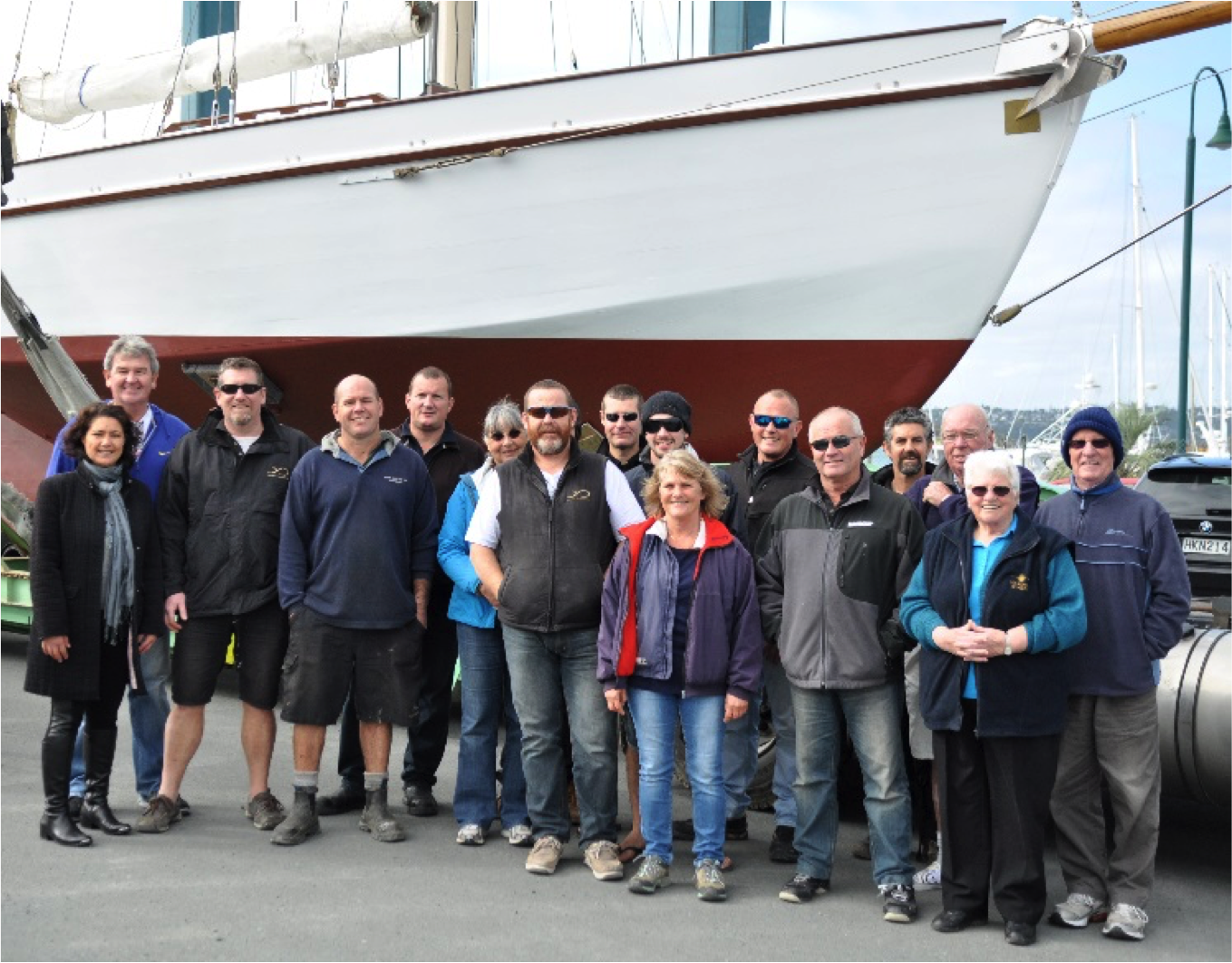
Ngataki on her first sail with new high top gaff rig and sail plan. Many thanks to Roger Hill, Neil Morris and Michelle Khan.
Photo courtesy of Roger Mills at Hummingbird www.hummingbirdvideophoto.com
Ngataki Tshirts for sale
Please support the work the Tino Rawa Trust undertakes with maintenance and ongoing restorations.
Contact Boat Books 22 Westhaven Drive, Auckland Central to secure your limited edition tshirt. All sizes @ NZ$40.
www.boatbooks.co.nz +64 9 358 5691
Ngataki’s new high top gaff rig circa 1931. Thanks to Roger Hill for the research and design.
Ngataki (left) and Te Rapunga slogging towards North Head, Auckland, with 1630 miles to go to Melbourne - the 1934 Trans Tasman Race was underway


